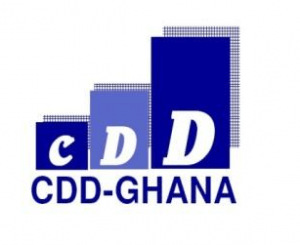Assemblies must make use of District League Table – CDD
 Ms Mavis Zupork Dome, Research Officer of the Centre for Democratic Development (CDD), has advised municipal and district assemblies to use results of the District League Table (DLT) for advocacy and proposals for assistance.
Ms Mavis Zupork Dome, Research Officer of the Centre for Democratic Development (CDD), has advised municipal and district assemblies to use results of the District League Table (DLT) for advocacy and proposals for assistance.
She gave the advice at the launch of the 2015 DLT in Ho.
The DLT is based on performance in relation to level of success in dealing with open defecation, Basic Education Certificate Examination (BECE), regular water coverage based via the Community Water and Sanitation Agency (CWSA), the ratio of Police to the citizenry, and functional Organizational Assessment Tool (FOAT).
The 2015 DLT Report published by UNICEF and CDD saw Volta Region pegged at the ninth position as in 2014, placing nine out of the ten regions.
At 30th position on the DLT, Kpando Municipal was the best performer from the Volta Region in 2015 up from the 131st position in 2014.
“The 2015 report defined DLT as a simple ranking tool of progress toward delivering development and key basic services in Ghana’s Districts. It is based on global practice of developing indices for measuring and monitoring progress.”
Mr Charles Dzradosi, Social Policy Specialist, UNICEF, explained that the DLT compiled by UNICEF and CDD in collaboration with the Ministry of Local Government and Rural Development (MLGRD) is a social accountability tool for promoting dialogue, transparency and responsiveness between the citizenry and government.
He said the DLT was not a tool for assessing municipal and district assemblies with their chief executives and indict them, because they were only playing complementary roles to central government.
He said DLT as a tool has many uses and could be used by multiple actors such as staff of assemblies to provide valuable information on where they stand in the Region or the country as a whole.
The annual publications of the DLT could also be used to demonstrate progress or lack of it every year and help build trust and support from the citizenry in local decision making.
The citizenry could also use the DLT to know how their districts were faring in the national ranking and to rally stakeholders to address slow progress and leap- frog to the top.
An animated debate ensued as to whether the performance on the DLT reflected the quality of leadership or not with some representatives of some municipal and district assemblies on the defensive.
The representatives raised issues with the criteria used, citing inequality in resources especially in the new districts.
It was argued that sub-district structures should be strengthened rather than have them elevated to district status without the muscle to deliver the social goods necessary for securing the well being of the populace.
Source: GNA
